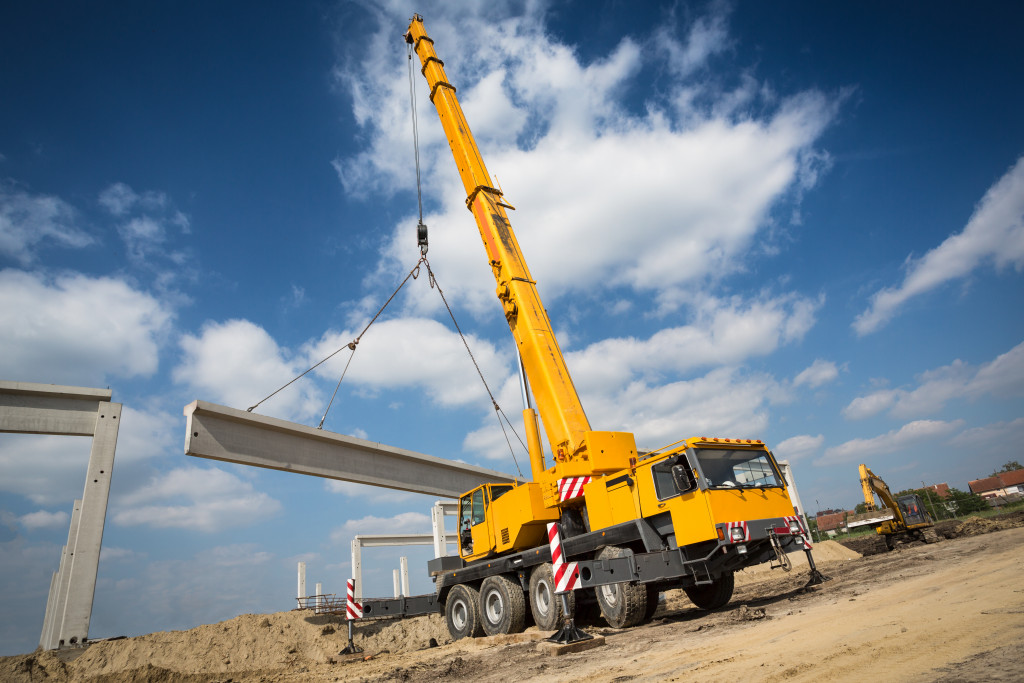- Terrain-adaptive machines have come a long way in the construction industry, from early simple tools to modern giants that can easily tackle challenging terrains.
- These machines have mobility and stability on unforgiving grounds, power and precision combined, and safety and operator comfort.
- They have been used to complete projects in deserts, forests, marshes, and more, proving their worth.
- As the development of terrain-adaptive machines continues, many innovations make tasks more accessible and efficient.
In the world of construction, the right tools make all the difference. Especially when faced with tricky lands. Imagine trying to lift heavy things on a muddy hill or a rocky field. Not easy, right?
But, thanks to special machines built for these tough places, these tasks are no longer impossible. These machines have raised the bar. They show that no matter how tough the ground, there’s a way to get the job done. This article is about these amazing machines and how they keep pushing limits.
The Evolution of Terrain-Adaptive Machines
The history of terrain-adaptive machines goes back a long way. Early versions of these machines could handle minor hills and uneven surfaces but were unsuitable for highly challenging terrain.
Early Innovations
Once upon a time, when builders faced rough lands, they had to use many tools and a lot of hard work. These tools were simple and often couldn’t handle significant challenges. There were also machines getting stuck in mud or not strong enough. But as concerns grew, so did the ideas to solve them.
Modern Day Marvels
Today, it’s a different story. Machines nowadays can drive ground and lift weighty things. One star player is the rough terrain crane. It’s like the superhero of cranes. It can go places where other cranes can’t and do jobs that once seemed too hard. It has an adjustable track width and a powerful drive system, which makes it ideal for moving around on rough grounds. This crane is also equipped with a self-leveling suspension system, so it can handle more weight than other cranes.
Key Features that Set Them Apart

Of course, these machines have plenty of features that set them apart from the rest. Here are a few examples:
Mobility and Stability on Unforgiving Grounds
Machines nowadays are more than just muscular. They are also incredibly stable and mobile, so they can move around challenging terrain quickly and easily. One of the best examples here is the Crawler Mounted Crane. It has advanced track technology enables it to move across muddy and rocky lands without slipping or sinking. In addition, it is equipped with an adjustable base frame, which allows it to adapt to any terrain without compromising stability.
Power and Precision Combined
But it’s not just about moving around. These machines, especially the rough terrain crane, have a mix of strength and smarts. They can lift huge weights while making sure everything is placed perfectly. It’s like having a giant’s power and an artist’s careful hands all in one.
Safety and Operator Comfort
Lastly, these machines are also designed for operator safety. They have comfortable cabins with excellent visibility and plenty of features to make the job easier. For example, some rough terrain cranes come with auto-leveling arms that can remove the strain from lifting heavy objects.
These features make it possible for operators to do their job without worrying about risking any accidents.
Real-World Applications and Success Stories
Imagine building a bridge in the middle of a marshy land or setting up a tower in a hilly area. Sounds tough, right? But with machines made for such lands, even these hard jobs become doable.
For example, crawler-mounted cranes can be used to move heavy objects across marshy grounds and even rivers without sinking. This means that projects like bridge construction in a marsh can be completed quickly, making it easier for infrastructure to grow even in unstable terrains.
Similarly, for mountainous terrains, rock drilling machines come in handy. These machines can be used to bore holes for anchors and footings securely, allowing workers to place objects firmly even on rugged terrain.
The Future of Terrain-Adaptive Machines

The development of terrain-adaptive machines has not stopped. Many innovations are coming out, and they keep making these tasks more accessible and more efficient. In the future, you can expect to see even more amazing projects from these machines. Maybe they’ll even be used in jobs that no one thought possible. That’s the beauty of them; they never cease to surprise.
Final Thoughts
From the early days of simple tools to the modern giants that roam construction sites today, there has been a journey of innovation and courage. The drive to conquer challenging grounds and elevate expectations has given people machines that redefine the limits. As you look at these amazing machines, consider the possibilities they open up for various industries.




